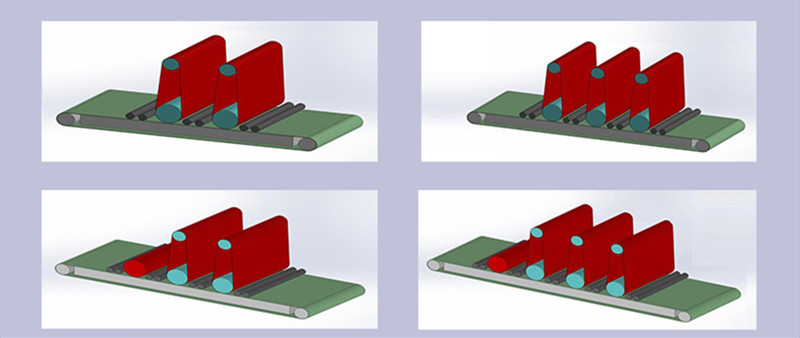Wide Belt Sander Machine: A Comprehensive Guide for Precision Metalworking
Introduction
In today’s fast-paced and high-demand manufacturing environment, surface quality and finishing precision are essential for both function and aesthetics. From deburring and edge rounding to oxide removal and surface finishing, manufacturers require machines that can handle high volumes while maintaining consistent quality. One of the most important machines for achieving these goals is the wide belt sander machine.
Though originally designed for woodworking, wide belt sander machines have evolved significantly and now play a crucial role in metalworking industries, especially in sheet metal fabrication, stainless steel processing, and precision parts manufacturing. This guide provides an in-depth look into wide belt sander machines—their structure, functions, benefits, and vital role in modern metal production.
What Is a Wide Belt Sander Machine?
A wide belt sander machine is an industrial-grade finishing machine that uses large, high-speed abrasive belts to process flat materials. As the name suggests, the sanding belt is wider than conventional systems—typically ranging from 600mm to 1650mm—allowing for the processing of large metal panels or multiple smaller parts simultaneously.
In the context of metalworking, the wide belt sander machine is designed to:
Remove burrs and sharp edges from cut parts
Round edges to a controlled radius (e.g., R1–R2)
Remove oxide layers or slag
Create uniform finishes for coating, welding, or assembly
This machine ensures consistency, repeatability, and surface quality that is hard to match with manual grinding or other finishing methods.
Main Structural Components
Modern wide belt sander machines are composed of several key modules, engineered for precision and durability:
1. Abrasive Belt System
This is the central component of the machine. The abrasive belt is stretched over rotating drums, driven at high speed, and pressed against the workpiece by contact rollers or pads. Different belt grits can be selected for heavy stock removal or fine finishing.
2. Conveyor System
The workpieces are fed through the machine on a conveyor bed. For small or thin metal parts, vacuum conveyors or magnetic hold-down systems ensure stability during processing.
3. Contact Drums and Pressure Pads
These elements control the pressure applied by the sanding belt. High-end machines feature electronic segmented pads that adjust pressure independently across the belt width—crucial for handling warped or uneven parts.
4. Brush Heads (Optional)
Brush modules can be added to the machine for tasks like edge rounding, oxide removal, or creating decorative finishes. They may rotate, oscillate, or move in planetary motion for uniform surface treatment.
5. Dust and Slurry Management
Depending on whether it is a dry or wet sanding machine, dust collectors or water filtration units are integrated to manage waste, improve visibility, and ensure a clean working environment.
6. Control System
Digital control panels or touch-screen HMIs allow operators to adjust parameters such as feed speed, belt speed, pressure zones, and thickness calibration. Advanced systems can store recipes and provide real-time monitoring for productivity.
Core Applications in Metalworking
The wide belt sander machine is particularly well-suited for various metalworking processes, including:
Deburring: Removing small metal projections (burrs) formed during cutting, punching, or shearing.
Edge Rounding: Creating consistent and safe radii on internal and external edges, essential for coating adhesion and safety.
Oxide Layer Removal: Eliminating oxide layers left from laser or plasma cutting to ensure proper welding or coating.
Surface Preparation: Smoothing metal sheets for welding, painting, or powder coating.
Finish Brushing: Creating uniform brushed or satin surfaces, especially on stainless steel and aluminum.
Industries such as aerospace, automotive, HVAC, appliance manufacturing, and metal fabrication rely heavily on wide belt sander machines for their daily operations.
Key Advantages of Wide Belt Sander Machines
✅ 1. Superior Surface Quality
These machines produce consistent, high-quality finishes with controlled thickness and pressure, eliminating human error and irregularities.
✅ 2. High Efficiency
Capable of processing dozens or hundreds of parts per hour, wide belt sanders drastically increase productivity compared to manual finishing methods.
✅ 3. Versatility
A wide range of belt grits, brush types, and customizable modules allow the machine to handle different materials (stainless steel, aluminum, carbon steel) and processes in a single setup.
✅ 4. Enhanced Safety
Enclosed sanding systems reduce operator exposure to sparks, dust, noise, and repetitive strain, improving workplace safety.
✅ 5. Repeatability and Automation
Servo-controlled settings and programmable logic make these machines suitable for smart factories and high-volume production lines.
✅ 6. Lower Operating Costs
Although the initial investment may be higher, wide belt sanders lower labor, rework, and consumables costs over time due to their efficiency and reliability.
Use Cases in Modern Metalworking
Wide belt sander machines are increasingly used in:
Laser cutting shops: For oxide and burr removal
Welding preparation: Smoothing surfaces before TIG or MIG welding
Post-weld cleanup: Removing discoloration or splatter
Final surface finishing: Producing cosmetic finishes for consumer-facing products
Powder coating preparation: Ensuring optimal paint adhesion with consistent edge rounding
Some machines are equipped with multiple heads, allowing combined operations—such as grinding + brushing—in one pass. This saves time and ensures even more precise results.
Recent Innovations
As demand for quality and efficiency grows, wide belt sanding technology continues to evolve. Recent features include:
AI-based wear monitoring for belts and brushes
Automatic thickness measurement systems
IoT-enabled remote diagnostics and maintenance
Smart recipe management for consistent processing across shifts
Wet and dry hybrid systems for flexible operation
These innovations make wide belt sander machines essential for any modern, forward-thinking metalworking operation.
Conclusion
The wide belt sander machine has become a cornerstone of efficient, high-quality metal finishing. With the ability to deburr, grind, round edges, and produce flawless finishes at industrial speed and scale, these machines help manufacturers stay competitive in increasingly demanding markets.
Whether you’re a metal fabricator producing laser-cut parts or an OEM seeking consistent cosmetic finishes, investing in a wide belt sander machine will yield long-term benefits in quality, productivity, and cost savings.










